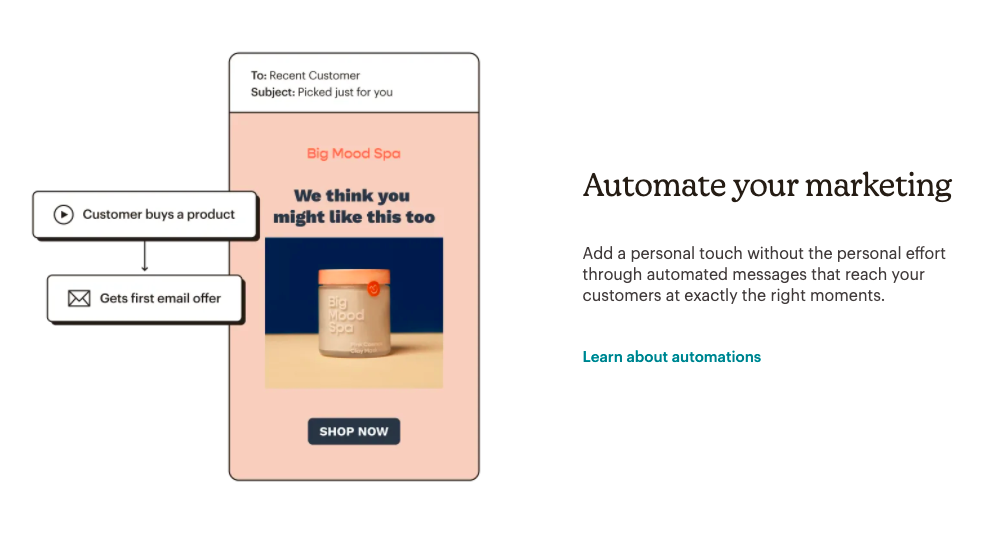
But the written word endures online. For awhile it was the dominant form of online communication and information. Now it seems there is a harmony between written word, audio and video online. And it will likely stay this way.
So it’s good to keep a focus on web copy. And for most people that are creating anything online, they’re looking for engagement. They want people to consume it, share it and take action after consuming it.
Let’s go over some of the keys to writing web copy that gets engagement in a few different areas online.
Key Components Of Engaging Web Copy
Web copywriting is about both quantity and quality. In order to get quality web copy you probably have to do a lot of writing. If we’re talking about a website, it’s good to understand that you will need to update, rewrite, revise and edit for the life of the site. It’s good to review your site every six months. You learn more. You experience more. It’s good to put that to use with fresh copy.
And if you’re aiming for engaging copy, here are a few items to consider.
1. Entertainment
Many forms of content are entertaining. When we watch life action sports, we’re often looking for entertainment. We’re looking for stimulation. Even though we’re watching we are also listening to the sounds and reading the words on the screen.
The same is true if we’re reading a book or listening to a song. We’re looking for entertainment. Something that amuses us. Something that compels us to see what will happen next.
So a key component of engaging web copy is entertainment. Entertaining web copy is similar to other entertaining situations. Consider a basic situation where you have a friend over to your house. You’re expected to entertain them. Your website or social media profile or whatever are like your house.
- Keep your copy organized with nice design, headings, paragraphs, etc.
- Use enthusiasm.
- Change the pace a little bit to avoid monotony.
- Use metaphors.
- Share short stories.
- Ask questions.
There are a number of ways to entertain. These are a good start if you’re struggling.
2. Education
People are also often seeking content that teaches them something. We read books both for entertainment and education. We do the same with movies and podcasts. When people come to your website or social media profile they are often looking to learn something.
A basic way to bring education to your copy is to focus on questions people are asking. If you’re a business, consider the questions customers ask you. Use your answers to guide the web copy you create. On your website, social profiles, blog posts, emails, etc.
3. Storytelling
Humans enjoy stories. The more stories you can work into your content the better. I suppose there is a point where you’re sharing too many stories. We all have the person in our family that rambles on and on about something that happened to them.
Don’t take it too far, but my guess is you’re probably not including enough storytelling in your web copy. Even something like a case study can be a form of a story. Talk about the interactions you had with the client throughout the relationship. People like reading these because they can put themselves into the shoes of the client.
4. Medium Parameters
Most movies are two hours. Most songs are three minutes. Most tweets are one sentence. Most LinkedIn posts are a paragraph. Most blog posts are 500 or 1,000 words. Most books are 300 pages.
Different mediums have different parameters. It’s generally good to stick to those parameters when you’re writing content for the web. You can go outside of the norm to test things. It might be entirely possible that a 10,000 word blog post does well. But you’re taking somewhat of a risk. People are familiar with it. They have to get over that initial hurdle of not being comfortable.
5. Tension & Tension Release
Pay attention the next time you get caught up in consuming content. A movie. A book. An article. A song. Often what you’ll notice is that the piece is doing a really good job of building tension and releasing it. Over and over. It doesn’t have to be huge swings, but little swings are a good thing for keeping someone’s attention.
It can be as simple as getting people to wonder what is going to come next and then having that thing actually come very shortly after. Then do the same thing again with a new piece of information.
Best Practices For Web Writing by Medium (With Examples)
There are a few different places where you’ll be writing web copy. It’s not just about the homepage on your website. There are sales pages and blog posts. You also have all the social media sites and apps where you write content for the platform. You also have messaging apps that could even include texting.
Here are some best practices for writing engaging web copy in a few of the most common mediums.
Website Pages
When writing website copy I like to think of the entire website as your online salesperson. They are taking the visitor through the entire sales process just as a salesperson would if they were talking to a customer on the phone or in a store or wherever. The process is almost always the same.
I like the way MailChimp does their website pages.
Right away they are telling you what they offer. That’s the same thing that often occurs when a person walks into a store. The salesperson often shares some quick details about what the store has to offer. Or you may walk into a restaurant and immediately receive a menu or look at the menu above the cash register.
Consider the questions that a customer will ask throughout the process. Provide the answers just as you would in person. Consider the questions you often ask and what the customers provide for answers. This can help make your content engaging when someone visits one of your main pages.
Here is MailChimp again probably addressing something their customers bring up. I’m sure that MailChimp salespeople have asked, “What is your biggest marketing struggle?” And I’m sure customers have said, “I don’t have time to do it all.”
So here is MailChimp writing about how they help marketers save time.
Blog Posts
Blog posts are another form of web copy. You’re reading one right now and you likely started by asking a question online. Maybe with a search for the information on Google. So my goal with writing the post was to provide the answer that you were seeking.
Blog posts typically follow the basic structure of Intro, Body and Conclusion. It’s what people expect so it’s good to give them that. Most posts are between 500 and 1,000 words. But obviously there are some very good posts that are shorter and very good posts that are longer. This one will probably come in around 1,500 words.
Derek Sivers is a great blogger. I’ve read a lot of his posts.
This one is great.
Derek starts by sharing a quick story. That’s a great way to capture attention. Derek used the story to move into an observation and lesson on life. That it’s good to make plans, but to be open to changing or altering them. He didn’t use headings like you see in this post, but he does use bolding to bring out emphasis on certain items in the post.
Ryan Holiday is a great writer. He writes and creates in many forms, including blog posts. His Medium blog is a good one. He often writes lists and how-to posts. Those are staples in the blogging world and if you’re struggling on how to be more engaging, start with those two types.
Social Media
Some people on social media are popular because they create other content. Ashton Kutcher was one of the first very popular users on Twitter. He shares some pretty engaging content there, but it’s probably safe to assume that his celebrity from being on television and in movies led to much of the fanfare on Twitter.
Many NFL reporters are very good on Twitter. Some are popular from writing newspaper columns and being on TV. But many are just very good at sharing engaging content on Twitter. Tom Pelissero, for example, shares content that often hasn’t been released yet. So people are engaged very often. Tom has to work hard to build relationships that will lead to this type of information. And Twitter has become a great medium for him to share this information and engage with an audience.
I really enjoy what Kevin Bailey does on LinkedIn. He shares stories. He asks questions. He answers questions. He responds to comments on his posts. He comments and shares other posts. This is great on LinkedIn, but it also works on just about every other social media channel that allows you to share written content as well. Facebook is a little more personal, but sharing this type of content works well there too.
Final Thoughts
The written word is alive and well on the web. It’s good to expand into other content with audio and visual. But the written word is here to stay. And the goal with most content is to engage an audience. Hopefully this short guide can help you to better create web copy that brings engagement. Because with that often comes more traffic, awareness and sales. And who doesn’t love that…


